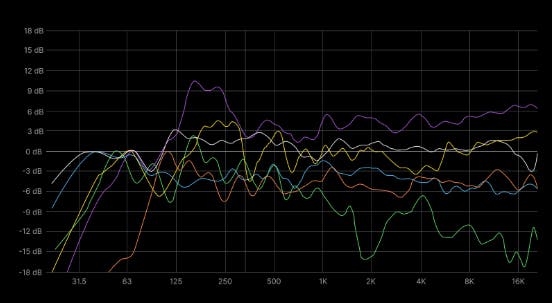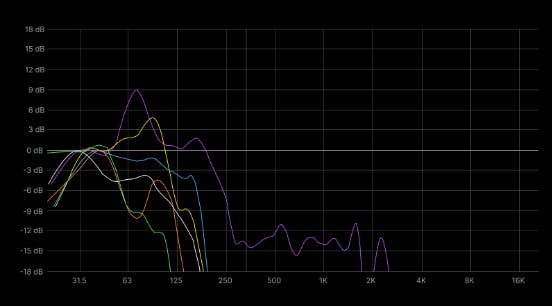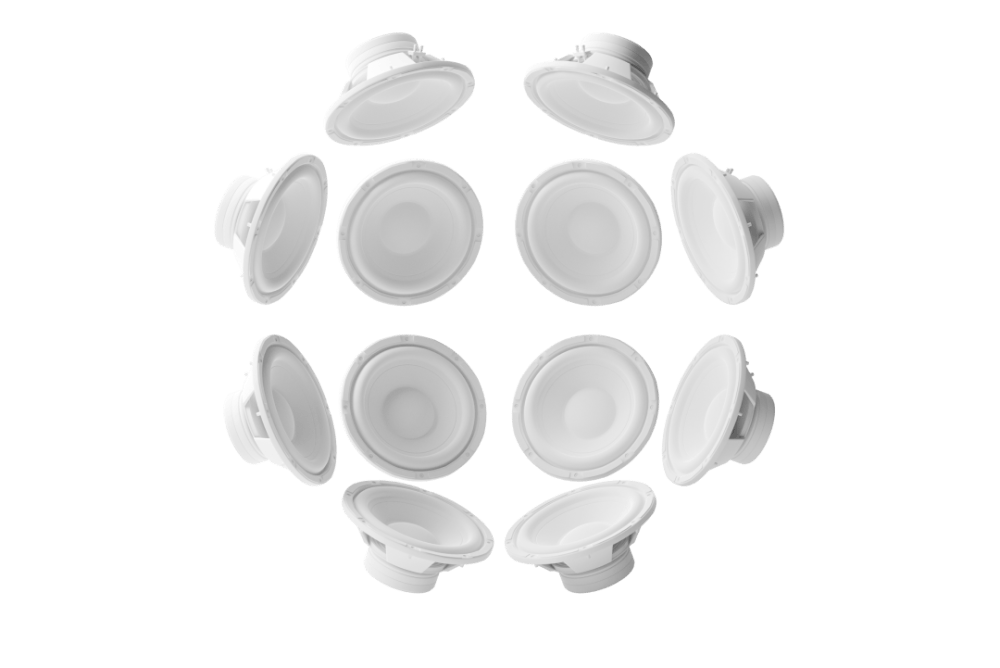With spatial audio technologies such as Dolby Atmos expanding outside cinemas to hundreds of millions of consumer devices, more and more studios are upgrading to multichannel speaker setups to facilitate creation of spatial audio content. To produce convincing immersive experiences, neutral frequency response is paramount. This is the second piece in a series on multichannel speaker setup calibration, this time focusing on bass management.
The idea of bass management is to redirect low-frequency information that is not reproducible by the intended speaker to another speaker (subwoofer) that is physically capable of reproducing this information.
What are the main benefits of using the bass management approach? First, most satellite speakers found in multi-channel studios fail to meet standards (e.g. Dolby Atmos) for full-range speakers: it’s rare that these speakers are capable of accurately reproducing frequencies below 50Hz. We have collected frequency response data from 6 different satellite and 6 subwoofer speakers from various professional-grade multi-channel studios. As you can see from Figure 1, only 2 out of 6 speakers can actually be considered full-range speakers with bass starting to roll off at 25Hz. On the contrary, in Figure 2 all 6 subwoofers are able to reproduce low-frequency content. Trying to correct satellites digitally will solve this issue to some extent, however, it most likely will push speakers over their physical capabilities, therefore increasing harmonic distortion. Besides, getting actual full-range satellite speakers will be expensive and less practical due to their increased weight and size.


Second, it’s very common that satellite speakers in the multi-channel setups are not time-aligned with each other which leads to sound not arriving at your ears in the listening position correctly in time. With low-end content this will be even more prominent: imagine the same low-frequency sound played back simultaneously from different speakers with time-alignment issues–more often than not the low-frequency content will cancel each other out, resulting in a significant loss in perceived bass at the listening position. Another audible undesired effect is the ‘time smearing’ of highly transient sounds (i.e. kick drum), resulting in a distinguishable echo effect upon playback even in the very low frequencies.
Couple things to consider when enabling the bass management: make sure to set crossovers right as there might be situations where different satellites will have different frequency roll-off points. If no measurements are available, set to 80 Hz for satellites with driver size more than 6.5 inch and to 100 Hz for satellites with driver size less than 6.5 inch. In case measurements are available, make sure to set the crossover by the worst performing satellite speaker.
For satellite speakers the delay compensation should be bypassed for frequencies below the crossover point. Otherwise, a signal that’s routed to LFE will ‘smear’ due to summing of multiple signals with misaligned timing.
Read more about our latest findings, data reports, and research here.




